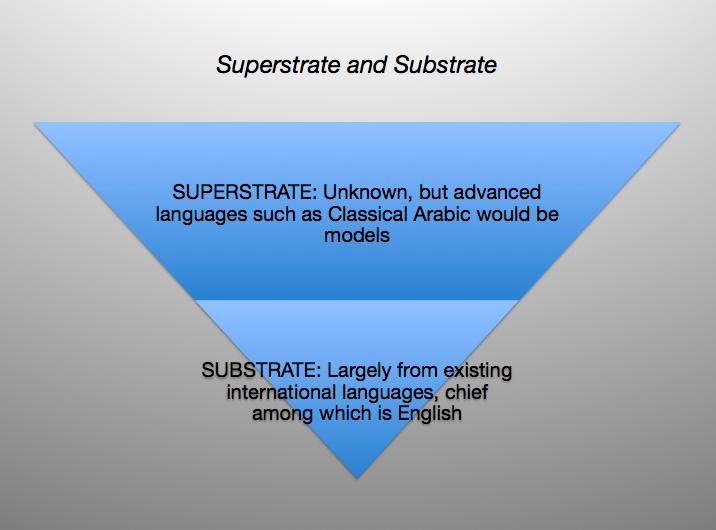 | ||
The jargon -> pidgin -> vernacular precedent also introduces the concept of a superstrate / substrate division. In these historic localised languages of commercial origin the superstrate was normally the language used by the merchant adventurers - English, Portuguese or French perhaps – and the substrates local indigenous languages, with existing “pidgin” words probably added too. Now let’s transpose the concept to the modern world and global scale and ask the question: What would be the superstrate and substrates now? Since we are talking about a world language of the future, the superstrate would presumably be an ideal, containing the best elements of all languages – and the substrates the languages of the world that would provide that material. However, it would be hopelessly impractical to present this material all at once in a single language, since the result would be far too complex and advanced. Indeed, the JPVP precedent would prescribe a very simple start, within the bounds of a tightly circumscribed phonology and grammar. Moreover, the same model would prescribe initial priority to relevant substrates: thus a “global pidgin” might especially require those substrates which have already demonstrated a measure of international acceptability: i.e. the major international languages, chief among which is English. This would give the initial IAL a “Western” bias in its phonology and vocabulary, but happily “pidgin” grammar – as modern vernacularised pidgins or “creoles” demonstrate - is analytic and “Eastern” in type, so a fair balance might be achieved in that way. | ||